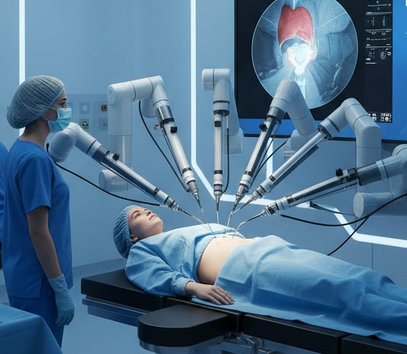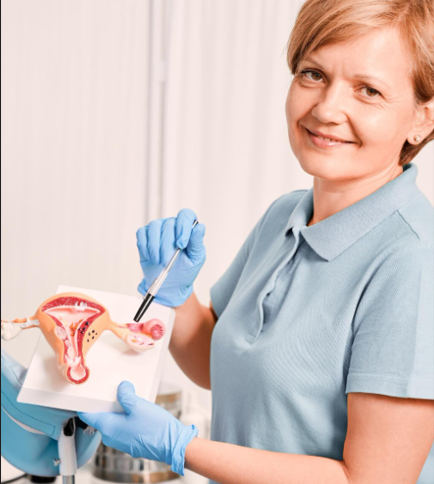Treatment Overview
Urinary Frequency & Pain Evaluation in Korea are common symptoms that may indicate Urinary Tract Infections (UTIs), bladder disorders, or other underlying urological or gynecological conditions. In Korea, urinary frequency and pain evaluation is part of a comprehensive women’s health program designed to diagnose and treat urinary tract problems accurately and efficiently.
This evaluation combines patient history, advanced diagnostic testing, and personalized treatment planning. Korean clinics are known for integrating state-of-the-art diagnostic technology with expert medical care, making them a leading choice for urinary health evaluations.
The goal is not only to treat existing infections but also to identify the root cause of symptoms and prevent recurrence, ensuring long-term urinary tract health.
Purpose & Benefits
The primary purpose of urinary frequency and pain evaluation is to determine the cause of symptoms, whether due to infection, inflammation, bladder dysfunction, kidney issues, or gynecologic factors.
Key benefits include:
- Accurate diagnosis: Advanced testing identifies the exact cause of urinary discomfort.
- Targeted treatment: Allows doctors to prescribe precise therapies to resolve underlying conditions.
- Symptom relief: Reduces pain, urgency, and discomfort effectively.
- Prevention of recurrence: Screening helps develop prevention strategies to avoid future infections.
- Overall health monitoring: Detects other conditions early that may affect urinary or reproductive health.
Korea’s medical system emphasizes preventive care, meaning evaluations often include additional testing to ensure complete urinary health.
Ideal Candidates
Urinary frequency and pain evaluation is recommended for:
- Women experiencing frequent urination or urgency.
- Patients with burning or painful urination.
- Individuals with recurrent urinary tract infections.
- Women with pelvic discomfort or bladder pressure.
- Postmenopausal women with changes in urinary patterns.
- Patients with unexplained urinary symptoms during routine gynecologic checkups.
Korean women’s health clinics make this evaluation accessible for both Korean residents and international patients seeking specialized care.
Possible Risks & Complications
Urinary frequency and pain evaluations are generally safe, though certain diagnostic tests may carry minor risks:
- Temporary discomfort during urine sampling or bladder examination.
- Mild irritation after cystoscopy or catheterization.
- Rare allergic reactions to contrast agents if imaging is used.
Korean clinics take strict measures to minimize risks, using advanced sterilization techniques and patient monitoring throughout the process.
Techniques & Diagnostic Methods Used
Korean urinary health clinics use a multi-step diagnostic approach to evaluate urinary frequency and pain:
1. Urinalysis:
Detects signs of infection, blood, protein, or abnormal cells in urine.
2. Urine Culture:
Identifies bacteria or pathogens causing infection for targeted treatment.
3. Pelvic Ultrasound:
Provides detailed imaging of the bladder, urethra, and reproductive organs to identify structural issues.
4. Cystoscopy:
Minimally invasive examination of the bladder and urethra to detect inflammation, stones, or tumors.
5. Urodynamic Studies (if indicated):
Assess bladder function, pressure, and capacity for diagnosis of urinary disorders.
6. Blood Tests:
Evaluate kidney function and detect systemic causes of urinary symptoms.
Korea utilizes AI-assisted urinalysis, high-definition cystoscopy, and advanced imaging technology for precise and fast diagnosis.
Recovery & Aftercare
Most diagnostic tests require little to no recovery time. Patients typically resume daily activities immediately, although temporary urinary discomfort may occur after cystoscopy.
If an infection or underlying disorder is identified, treatment options may include antibiotics, anti-inflammatory medication, bladder training programs, or lifestyle modifications. Korean clinics also emphasize follow-up care to ensure symptoms are fully resolved and urinary health is maintained.
Results & Longevity
Results from urinary frequency and pain evaluation are usually available within hours to days, depending on the tests performed. Accurate diagnosis enables personalized treatment, leading to faster symptom relief and reduced recurrence risk.
Regular urinary health evaluations in Korea contribute to long-term well-being by catching urinary tract disorders early, especially for women with recurrent symptoms or higher susceptibility due to hormonal changes or gynecologic conditions.
Treatment Process in Korea
Urinary frequency and pain evaluation in Korea is structured for efficiency and patient comfort:
- Initial Consultation: A specialist collects detailed medical history, discusses symptoms, and reviews prior health records.
- Diagnostic Testing: Urinalysis, urine culture, pelvic ultrasound, and cystoscopy if indicated.
- Results Discussion: Physicians explain findings in detail and propose a personalized treatment plan.
- Treatment & Follow-Up: Includes medication, preventive strategies, and scheduled re-evaluations.
Korean hospitals offer multilingual support, fast scheduling, and integrated diagnostic services, making them a preferred choice for international patients seeking comprehensive urinary health care.
Why Korea Is a Top Destination for Urinary Frequency & Pain Evaluation
Korea’s healthcare system excels in:
- Advanced diagnostic technology for rapid and precise results.
- Expert urologists and gynecologists specializing in urinary tract health.
- Integrated women’s health services combining urology, gynecology, and preventive medicine.
- Patient-friendly care, multilingual services, and minimal waiting times.
- Transparent cost structures and comprehensive treatment packages.
These factors make Korea one of the best destinations for urinary tract evaluation and treatment.
Cost Range
Costs vary based on the extent of evaluation:
- Basic Urinalysis and Consultation: ₩40,000 – ₩80,000 KRW ($30–$60 USD)
- Comprehensive Urinary Frequency & Pain Evaluation: ₩250,000 – ₩500,000 KRW ($190–$380 USD)
- Advanced Diagnostic Packages (Including Ultrasound & Cystoscopy): ₩600,000 – ₩1,200,000 KRW ($450–$900 USD)
Many clinics offer inclusive packages combining diagnostic tests and follow-up care for better value.
Popular Clinics in Korea
- Samsung Medical Center – Women’s Health & Urology Department, Seoul
- Asan Medical Center – Urology & Gynecology Services
- CHA Bundang Women’s Hospital
- Severance Hospital, Yonsei University
- Ewha Womans University Medical Center – Women’s Health Clinic
These institutions are renowned for advanced urinary tract evaluation, precise diagnostics, and personalized care tailored to each patient.




